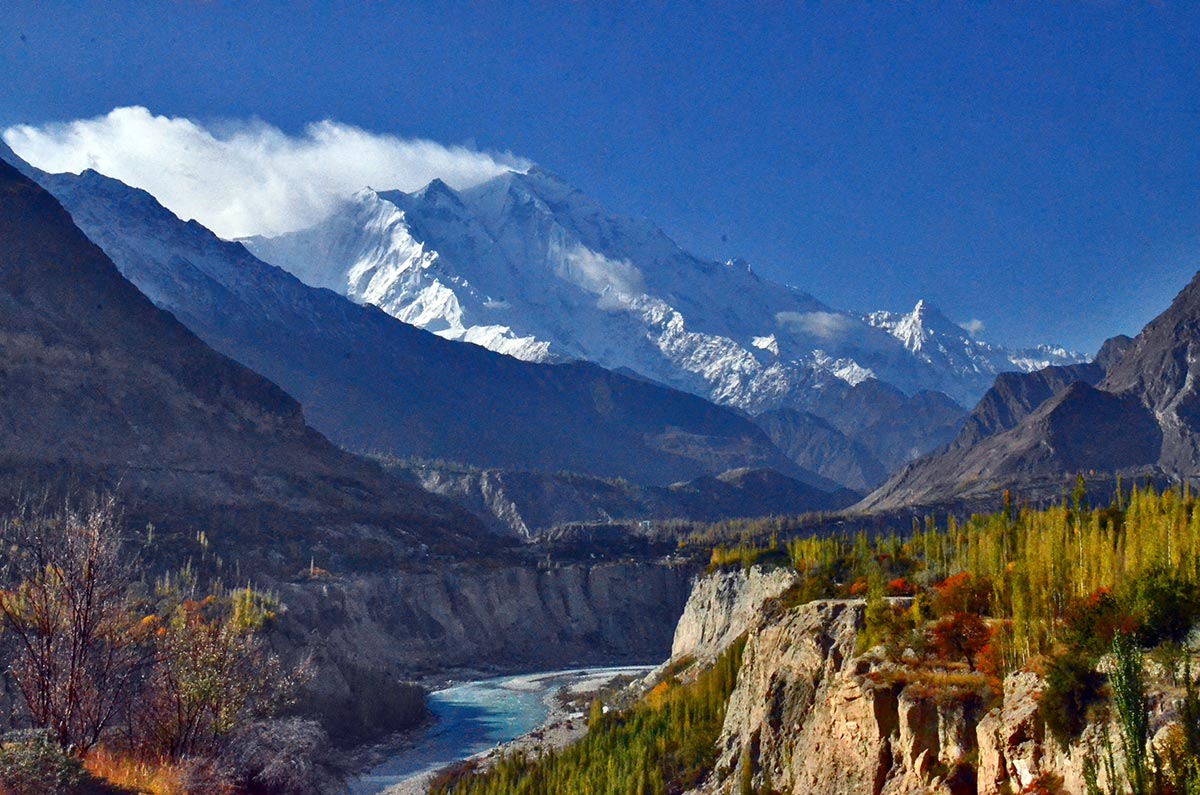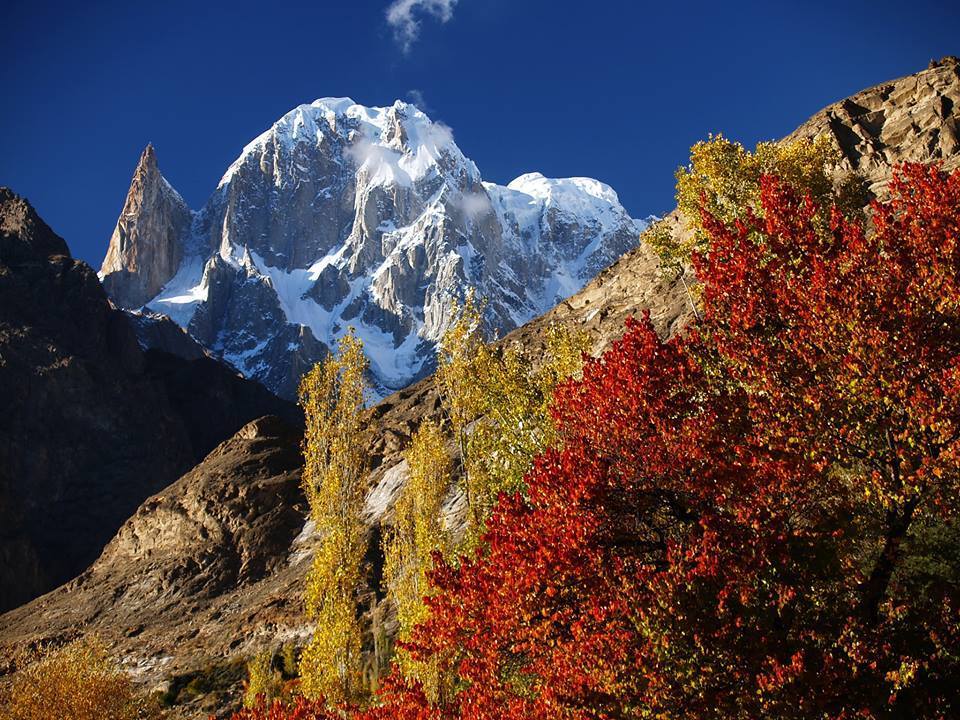Trek to Shireen Maidan 6-7 hrs, 16.9km, 586m ascent, 3888m, Descend west past large junipers to the alluvial plain in the ablation valley. Follow the easy trail north-west, through a lovely series of small ablation valleys, amid abundant junipers, willows and birches. An hour from Yashpirt, pass an old distinctive millstone, which was used until the late 1970s when barley was cultivated at Yashpirt and the primary summer pasture was Fatima,il Sheet. Occasional willows line the trail along a meandering stream. In 15 minutes, reach Piyakh Sheet (3345m) where a strange stand of turugokh, a kind of poplar, grows. The terrain opens onto a broad alluvial fan called Fatimhail Sheet (3402m. a side stream, Fatimahil stream, flows across the fan as the trail continues north-west end, nestled against an Eolian fluted cliff, 30 minutes from Piyakh Sheet. Continue up the ablation valley, passing through a wooden doorway, and reach the confluence of the good-sized Werthum Nala and the Batura Glacier 30 minutes from the Fatima,il huts. Werthum Nala, the stream draining the Werthum valley, parallels the Batura Glacier for 7.5km before disappearing dramatically under the Batura glacier here. Ford the stream just above the confluence and continue along its true right (south) bank one hour to Kukhil (spring side sheep pen) where a wooden footbridge leads to the hillside huts and livestock pens. From Kukhil, go along the true right (south) bank 1 ½ to two hours to another large alluvial fan called Shilmin (3627m)
From Shilmin the trail up the Werthum valley leaves the Batura Glaciers’ north margin bending 90 degrees and follows the Werthum Nala, s true right (west) bank north-east. Massive scree slopes on both the valley’s east and west walls guard its entrance. Stay close to the hillside (on both the valley’s east and west walls guard its entrance. Stay close to the hillside. Shireen Maidan (3888m) is a preferable campsite to Shilmin, well worth the additional 1 ½ hours walk. The peaks above the glacier offer climbing possibilities. overnight in tents.



